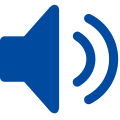Anatomy
tongue

tongue [ tuhng ]
Subclass of:
Oral cavity
Etymology:
Anglo-Saxon tunge = tongue
Definitions related to tongue:
-
A muscular organ in the mouth that is covered with pink tissue called mucosa, tiny bumps called papillae, and thousands of taste buds. The tongue is anchored to the mouth and is vital for chewing, swallowing, and for speech.NLM Medical Subject HeadingsU.S. National Library of Medicine, 2021
-
Movable muscular organ of the floor of the mouth, subserving the special sense of taste and aiding in mastication, deglutition and the articulation of sound.CRISP ThesaurusNational Institutes of Health, 2006
-
The muscular organ in the mouth used in taste perception and food ingestion.CDISC TerminologyClinical Data Interchange Standards Consortium (CDISC), 2021
-
The muscular organ located in the floor of the mouth and serving as the principal organ of taste and modification of the voice in speech.NCI ThesaurusU.S. National Cancer Institute, 2021
-
The tongue is a mass of muscle that is almost completely covered by a mucous membrane. It occupies most of the oral cavity and oropharynx.WebMD, 2019
-
Tongue, in most vertebrates, an organ, capable of various muscular movements, located on the floor of the mouth. In some animals (e.g., frogs) it is elongated and adapted to capturing insect prey. The tongues of certain reptiles function primarily as sensory organs, whereas cats and some other...Encyclopedia Britannica, Inc., 2020
Return to OpenMD Medical Dictionary
> T
This content should not be used in place of medically-reviewed decision support reference material or professional medical advice. Some terms may have alternate or updated definitions not reflected in this set. The definitions on this page should not be considered complete or up to date.